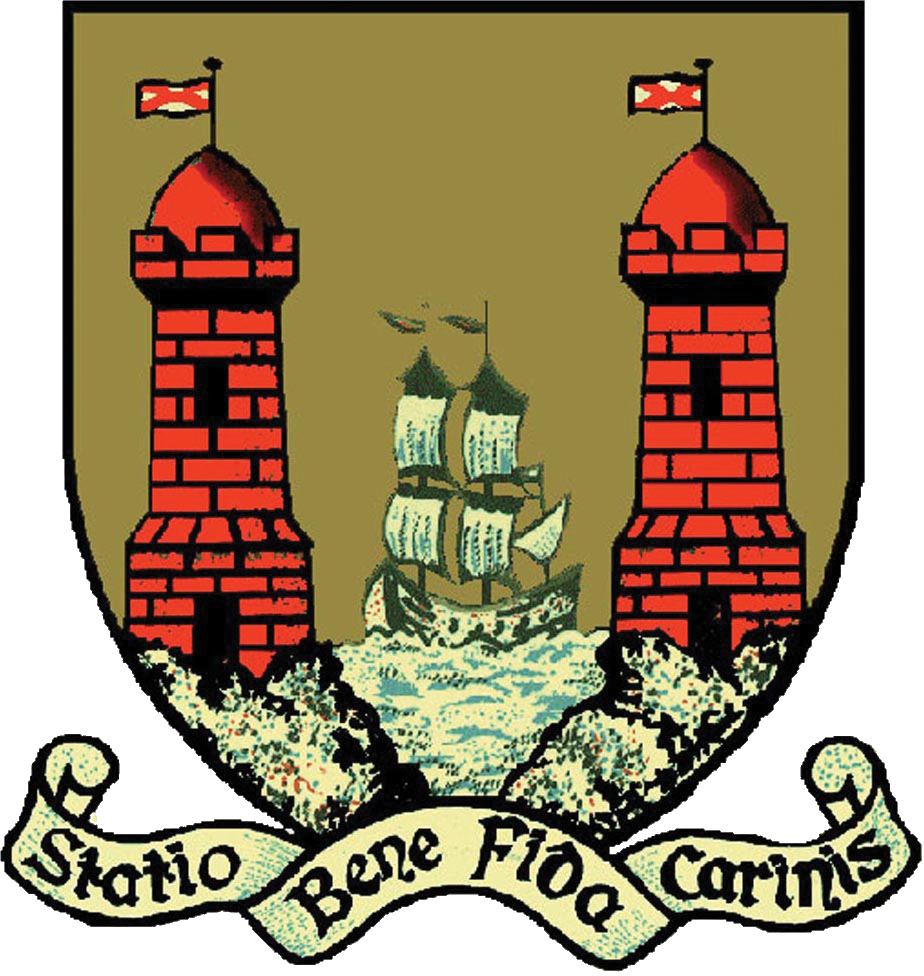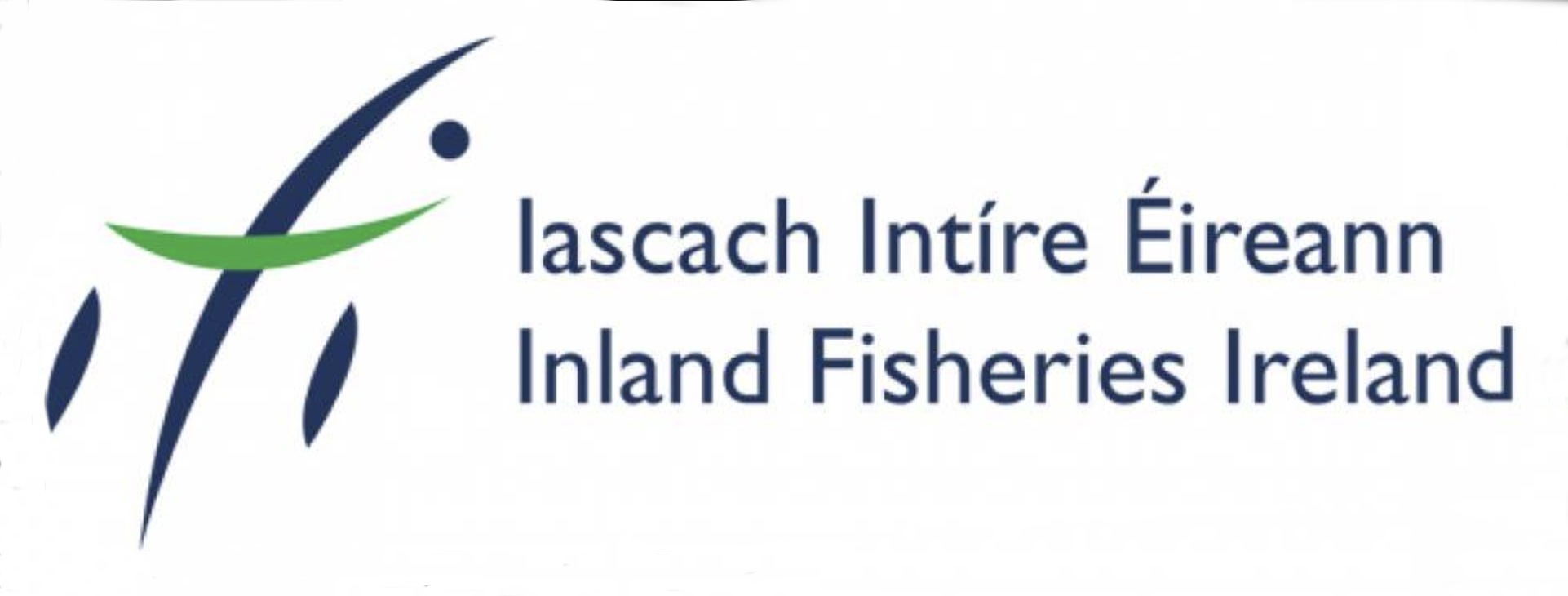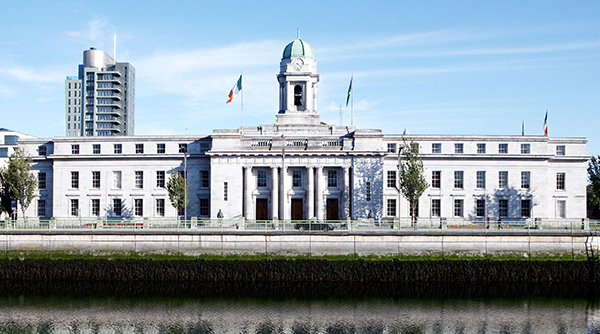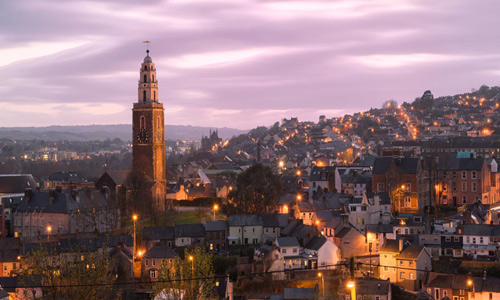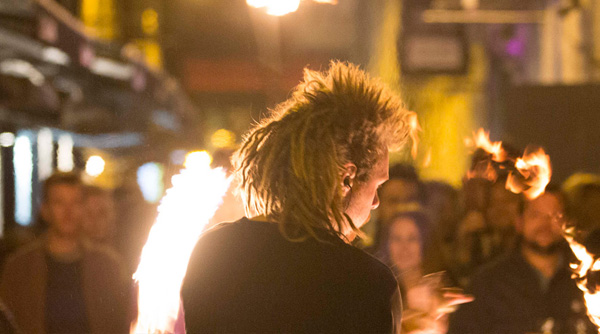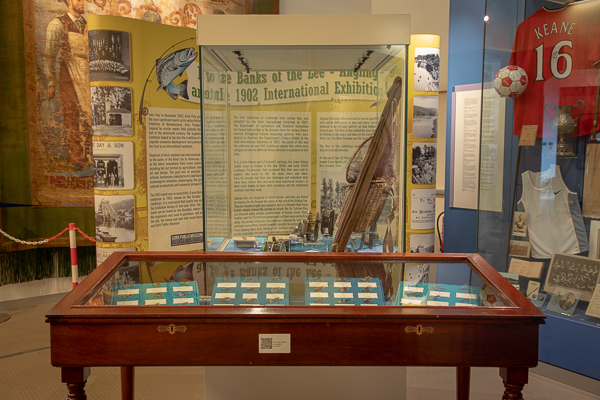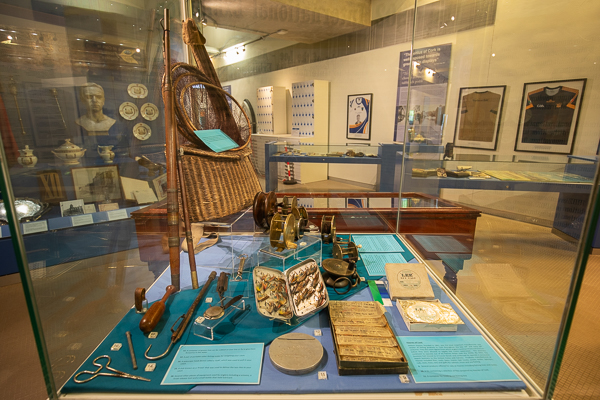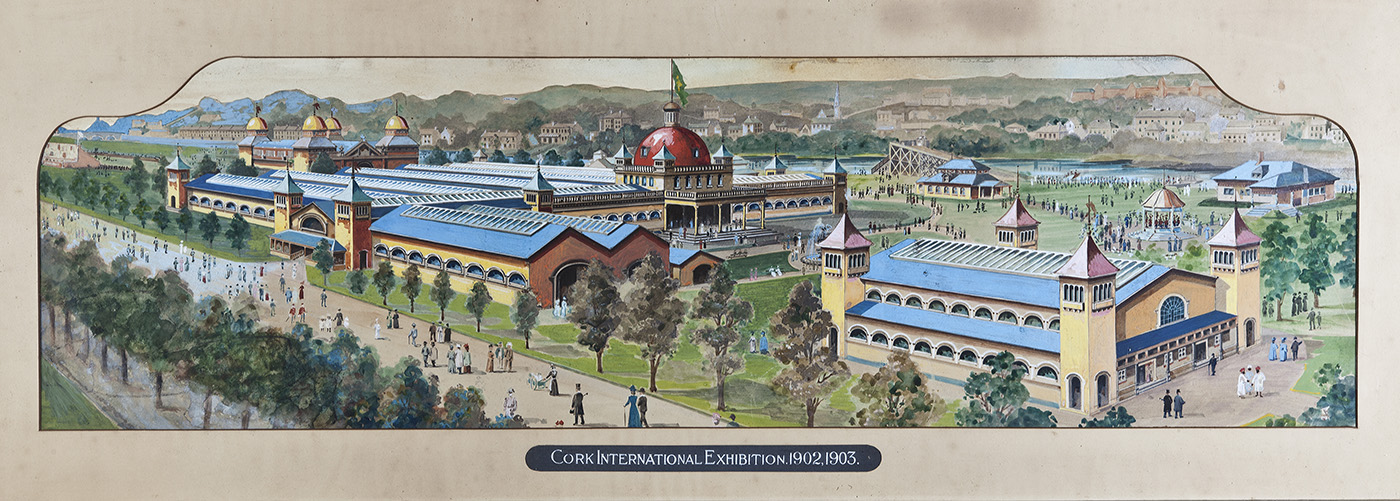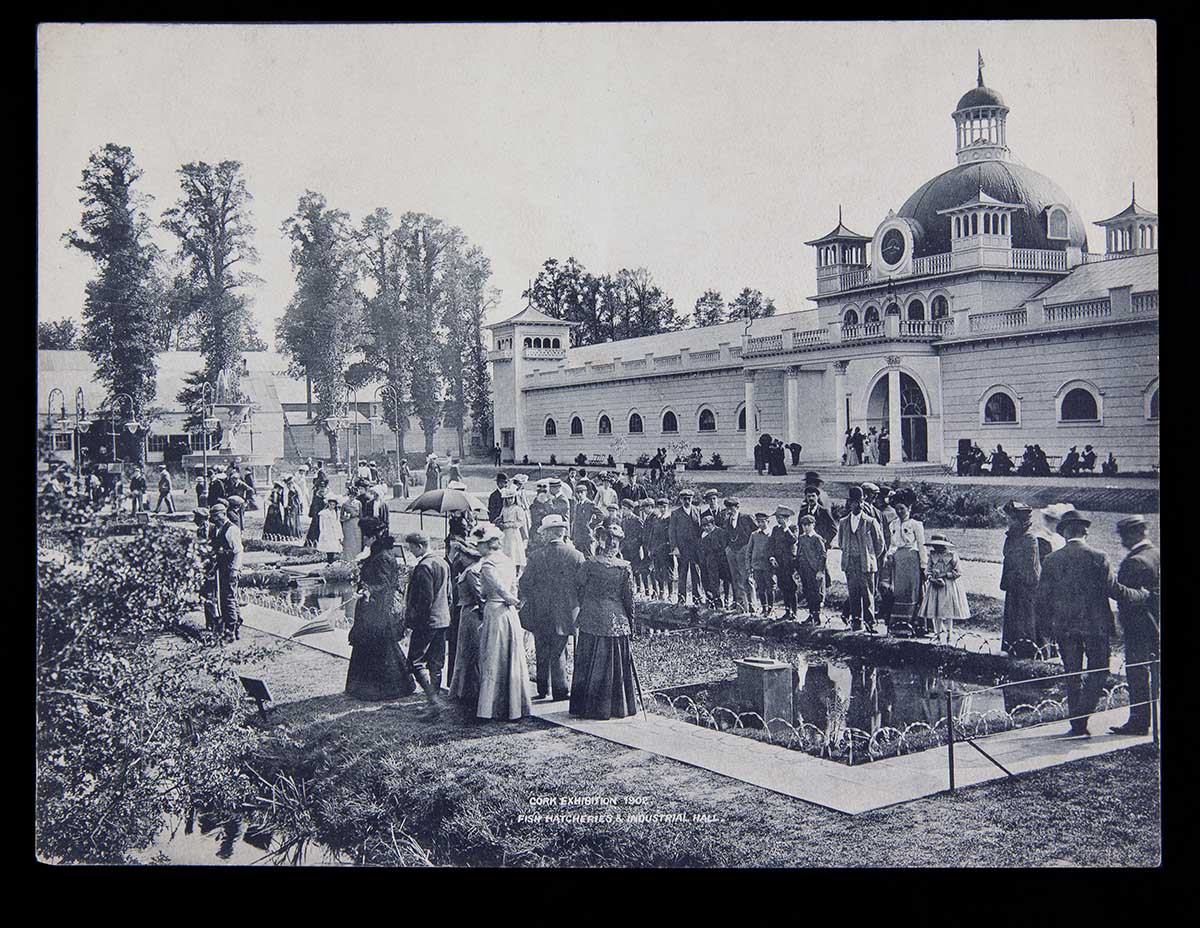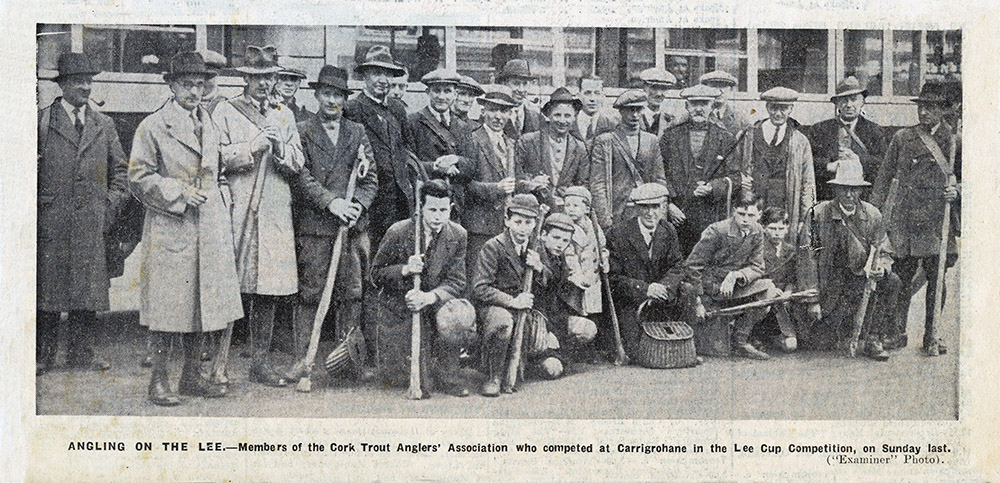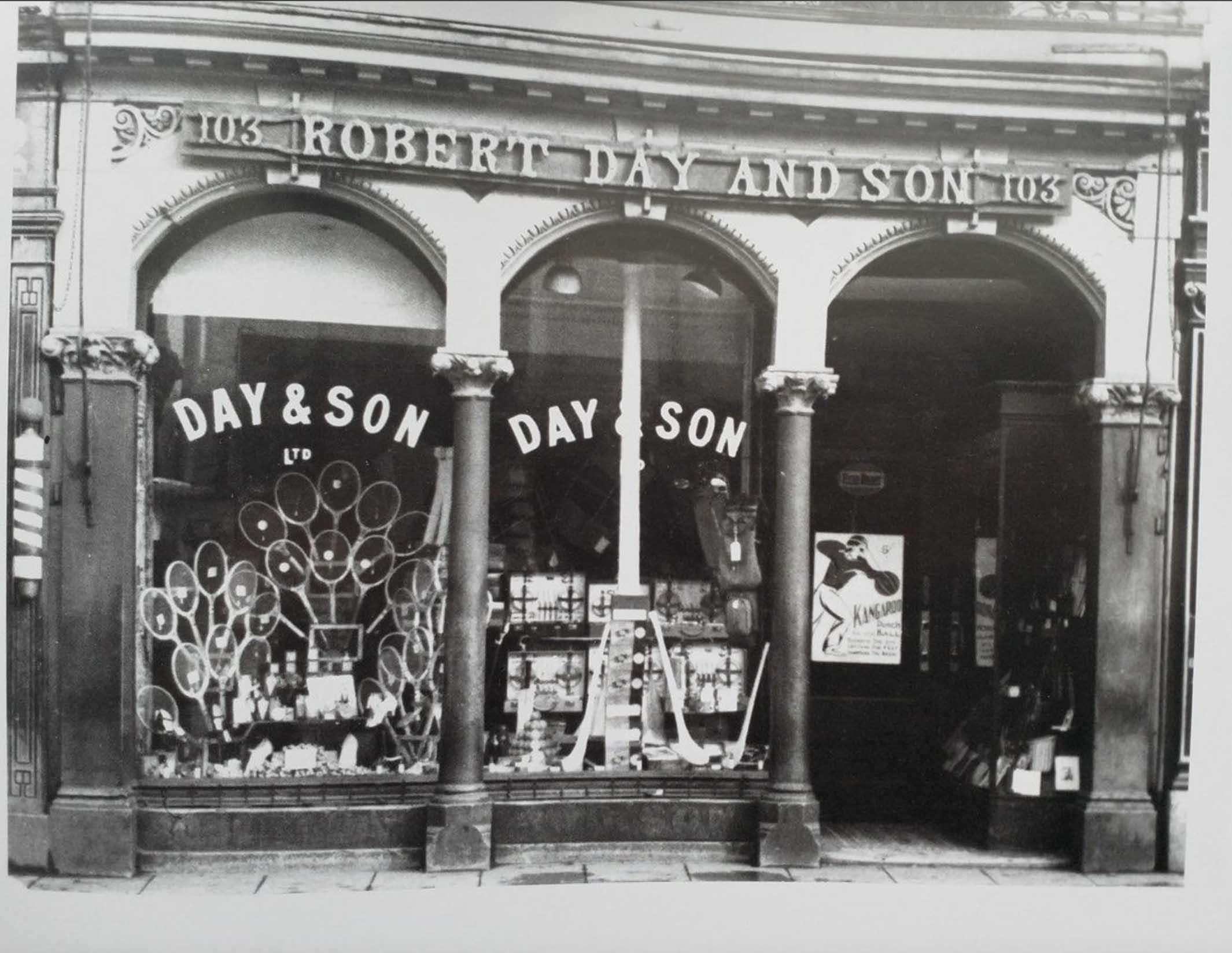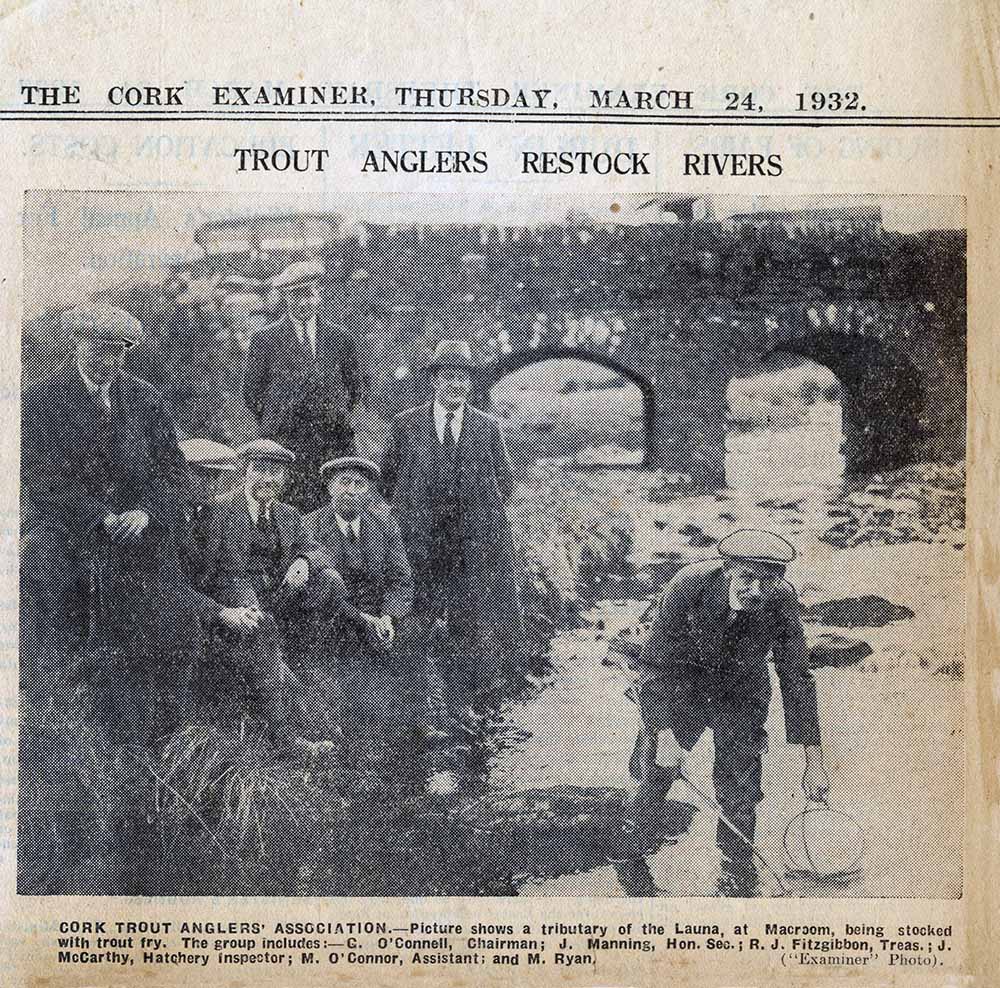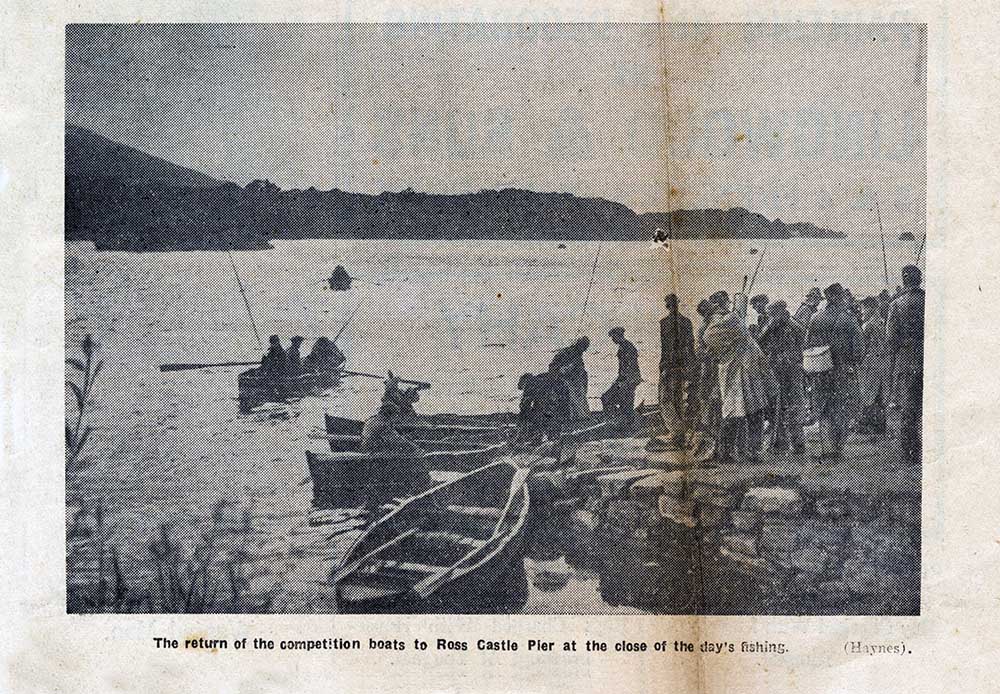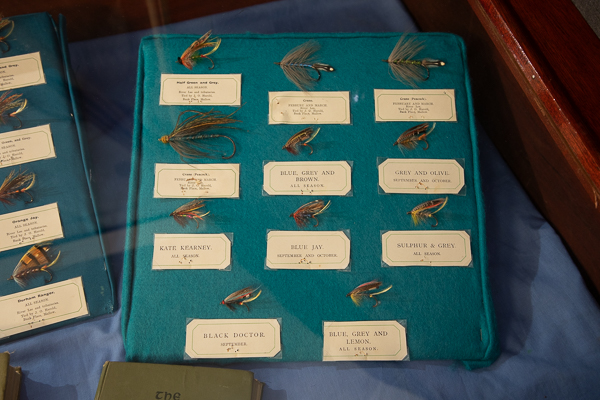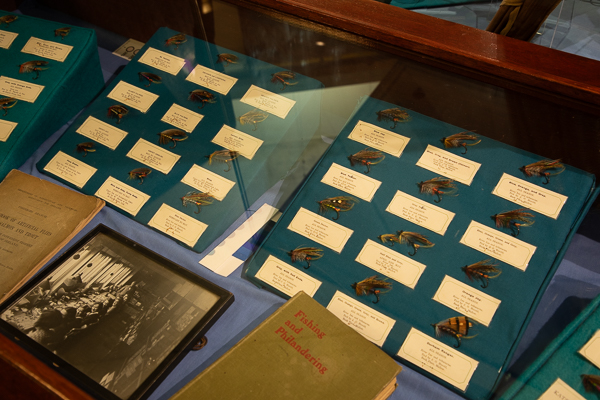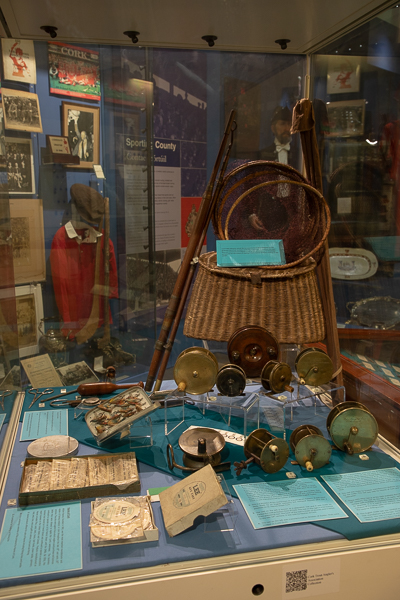Cork Trout Anglers Association
(Above and Right) Installation photos of Cork Trout Anglers Association Exhibition at Cork Public Museum 2024.
From May to November 1902, Cork City played host to one of the most significant events in its entire history: the International Exhibition of Manufactures, Arts, Products and Industries. Inspired by similar events held globally throughout the latter half of the nineteenth century, the organisers of Cork’s 1902 Exhibition hoped to tap into the tradition of using exhibitions to stipulate economic development and present a vibrant image of the Cork to an international audience.
(Above and Right) Illustration of the Great Cork International Exhibition at The Mardyke, Cork City and Fish Hatcheries and Industrial Hall, 1902-1903
(Above) Members of the Cork Trout Anglers Association who competed at Carrigrohane in the Lee Cup, c.1930's (courtesy of the Irish Examiner)
Hundreds of local, national and international exhibitors travelled to the banks of the River Lee to showcase their wares, as well as the latest innovations from many contemporary industries, including but not limited to, agriculture, manufacturing, fishing, art and design. The goal was to educate and instruct local artisans, businesses, manufacturers and farmers about the latest technological advances, encouraging the growth a of local and national productivity and economic prosperity.
Entertainment also played an integral part in the 1902 Exhibition, helping to generate repeat visitors. All sorts of amusements were provided including daily musical performances and concerts, regular sporting exhibition matches, art and archaeological exhibitions, as well as several fairground attractions such as a large Water Chute and an early type of Roller-coaster known as a Switchback Railway. There were also many restaurants and cafes to cater for all tastes and budgets.
The 1902 event was so successful, it was decided to hold another exhibition in 1903, known as the Greater Cork International Exhibition. It is estimated that nearly two million people visited the Exhibition during its two-year stint. The main legacy of this event can be found on the Mardyke, where the money made by the organisers was used to purchase, and eventually donate to the city, the house and land that would become Fitzgerald Park and Cork Public Museum.
(Above) Robert Day & Sons, Fishing Tackle Shop, 103 St Patrick's St.
Photo Marty Mc #LoveCork#PureCork#CorkLike @fitzgeraldmenswear via Irish Family Detective.
The Cork Collection of traditional Irish salmon flies was compiled for the Cork International Exhibition of 1902. The Department of Agriculture and Technical Instruction for Ireland had written to fly dressers from the various fishery districts throughout Ireland requesting patterns from each district to illustrate the Department’s Fishery Exhibit at the Cork International Exhibition of 1902. The result of this was the collection of over 400 traditional salmon flies which were categorised into the different fishery districts in existence at that time.
(Above) Restocking the river at Launa/Sullane, Cork Trout Anglers Association, 1932 (courtesy of the Irish Examiner)
(Above) Return of competition boats to Ross Castle Pier Co. Kerry, c.1930's.
It is a little-known part of Ireland’s heritage, but many fishing tackle shops in Ireland in the late 1800s and early 1900s employed ‘fly dressers’ that produced flies that were sold to anglers who came to fish the local rivers and lakes. Each fly dresser had their own technique and individual style when tying salmon flies and some were considered masters of their craft, thanks to their skills, creativity and the traditional methods that they used.
(Above and Right) Salmon flies on display at the museum exhibition
The flies in this exhibition were dressed specifically for fishing in the rivers and lakes in the Cork district such as the River Lee, the River Bandon and the Inchigeelagh Lakes. Salmon flies were often dressed for use on specific rivers or lakes, with subtle differences in hue and colour to reflect what was believed to be the best pattern on that fishery, at a particular time of year. The flies in this exhibition were tied by three different fly dressers:
1.Haynes & Son, 63 Patrick St., Cork,
2.Joseph Owen Harold (JP), Bank Place, Mallow,
3.Miss Hackett, Cork
(Above) Reels, rods and accessories on display at the exhibition, 2024
Salmon flies are designed to catch salmon, and they are fished by moving the fly through the water at the end of the fishing line. They are usually bright and colourful, and it is thought that these bright colours induce the salmon to attack the fly. Salmon flies are dressed using various combinations of thread, tinsel, floss, feather, and fur. Fly dressers sometimes had their own methods of dying the various materials that make up a salmon fly, and these methods were often closely guarded secrets, to prevent others from copying their flies. Some of the feathers used in the flies in this collection are very rare, and many are no longer available due to the rarity of the species from which they come.
For more information, please check out the Inland Fisheries Ireland website https://www.fisheriesireland.ie/news/press-releases/cork-collection-flies-1902
We have the minutes book of the Cork Trout Anglers Association on our Resources page of our website. You can check it out here: https://www.corkcity.ie//!KID15K
We would like to thank Shane O'Reilly, Inland Fisheries for the support and guidance on the project. The museum would also like to thank Rory O'Hanlon for the loan of some of his angling collection for this exhibition
